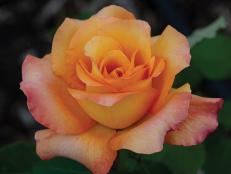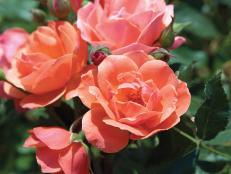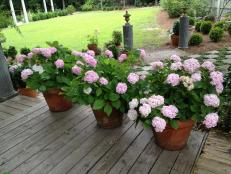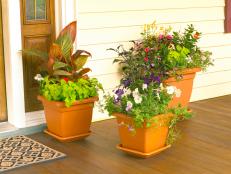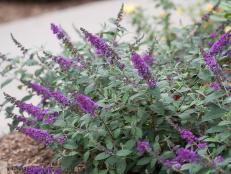Rose Garden Design
Savor the beauty of one of the most beloved flowers: the rose. Discover practical tips for designing a rose garden.
Always dreamed of growing roses? Make those dreams a reality by learning basic concepts of rose garden design. Roses look good in many types of gardens, and whether you plant them solo or blended with other perennials or shrubs, you can grow these renowned beauties in your own yard. The secret to successful rose garden design starts with giving these bloomers what they need.
Sunlight is vital for roses—these are sun-worshiping flowers. You’ll get the most blooms when you site your rose garden design in full sun. Morning sun is always better than afternoon sun, especially in more southern regions, where afternoon sun can be especially brutal. Most roses yield the best flowers when plants receive six to eight hours of sun each day.
A Cape Cod Rose Garden
See All PhotosChoose the roses you plant carefully. Many modern rose introductions boast repeat blooming, flowering non-stop the entire growing season. If you crave the lush, fully petaled fragrance of a classic rose, you might want to plant old-fashioned roses, many of which flower just once a year. If you opt for Hybrid Tea roses, expect repeat beautiful blooms from plants that need pampering. Research the roses you’re planting so you know the types of flower show you can expect.
Roses benefit from ample elbow room. As you craft your rose garden design, don’t jam roses on top of one another or between tightly spaced perennials. Many roses are subject to diseases, which spread easily when plants don’t have sufficient air circulation.
In your rose garden design, give each rose a space as wide as the plant’s mature height. For example, if a rose tag says the plant will reach four to five feet, give it 2 to 2.5 feet clearance on all sides. You’ll also appreciate this liberal spacing when you need to prune your roses.
Drip irrigation or soaker hoses are another key in keeping rose diseases at bay. Many rose diseases attack leaves and spread by splashing water. Limit overhead watering by incorporating root zone irrigation in your rose garden design. If you’re designing a brand new planting area, using root zone watering is one of the most important steps you can take toward improving rose health.
Decide if you want to create a garden devoted solely to roses or if you want to intermingle roses with other garden plants. For a solo rose garden, you’ll likely want formal planting beds to showcase different varieties and types. Many roses have knobby “knees” or lower stems. In a formal rose garden, hide these stems with a neatly trimmed boxwood or germander hedge.
Showcase climbing roses on a trellis, tripod, or tuteur. Some old-fashioned climbers will gladly clamber up a dead tree, soaring to amazing heights. Or build a specialized umbrella-type trellis that allows canes to grow up and drape over a wheel perched atop a pole. Climbing roses demand sturdy supports. Make sure posts are well anchored or your climber might wrestle its support to the ground.
To display roses with other plants, make sure you don’t surround a rose with a plant that’s going to overtake it. Perennials like Rozanne cranesbill geranium (Geranium x ‘Rozanne’) can quickly spread up and over a newly planted rose, and a happily spreading false indigo (Baptisia australis) or Morning Light maiden grass (Miscanthus sinensis ‘Morning Light’) can crowd out and shade a rose.
No matter which type of rose garden design you pursue, always start with soil that’s heavily enriched with organic matter. Whether you’re growing Old Garden roses, Hybrid Teas or modern Shrub roses, these blooming beauties demand rich soil that’s well-drained. Amend soil with well-rotted manure, homegrown compost or other locally available soil conditioner.











